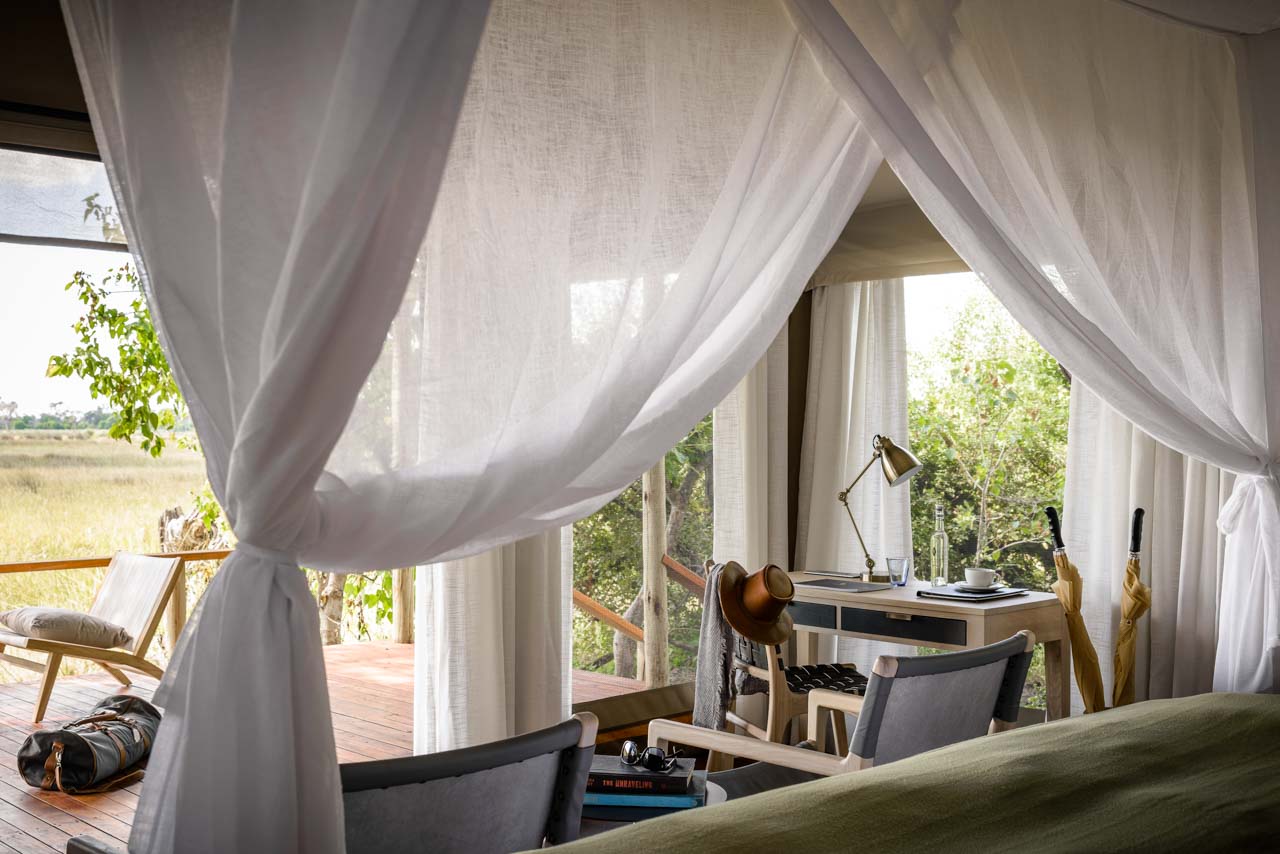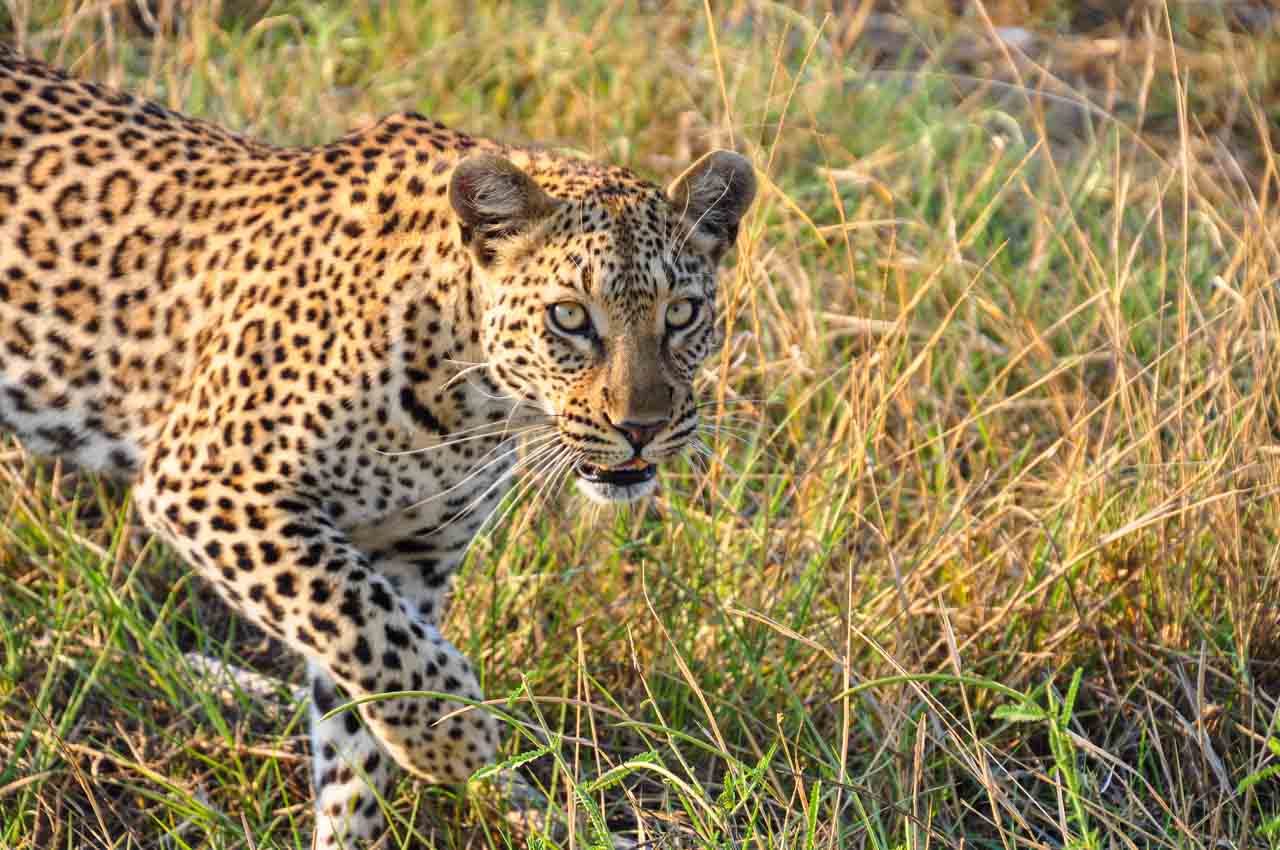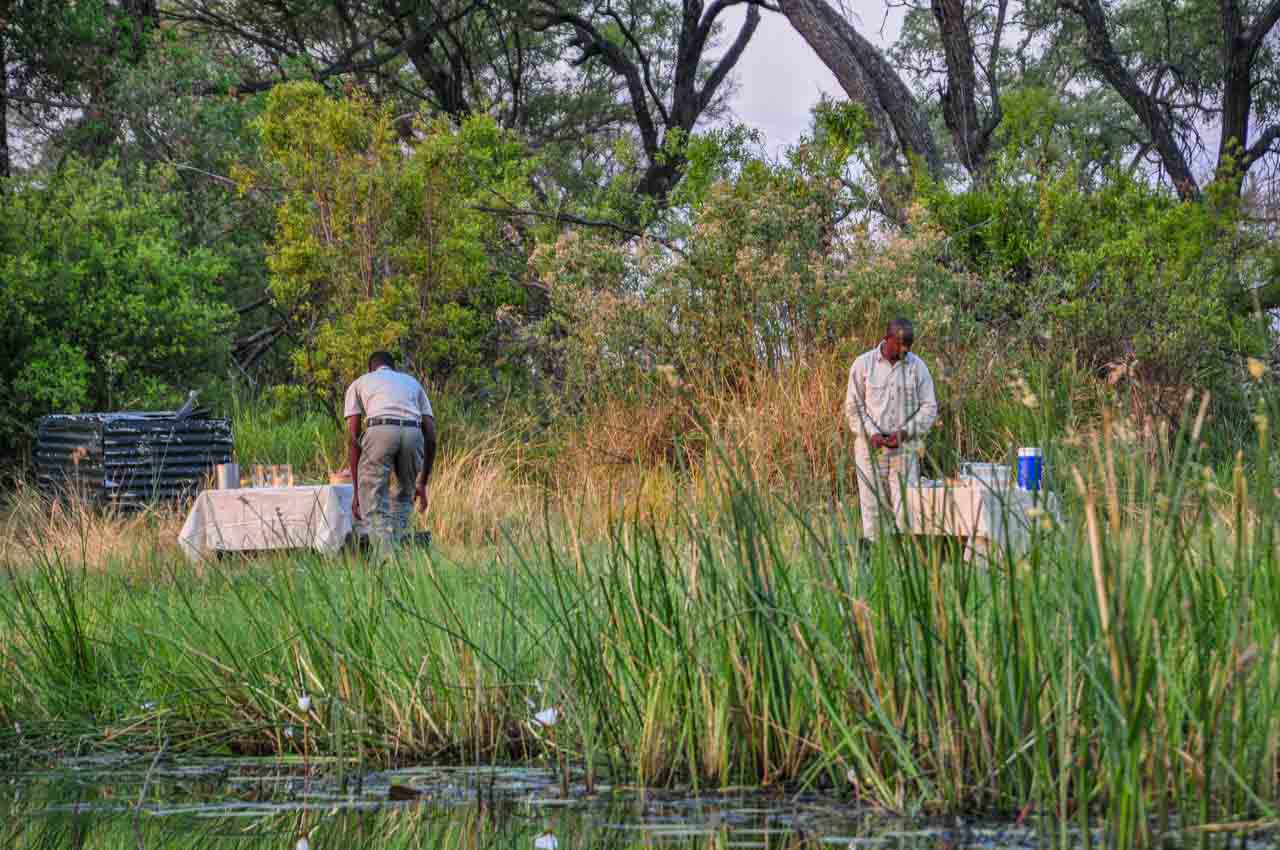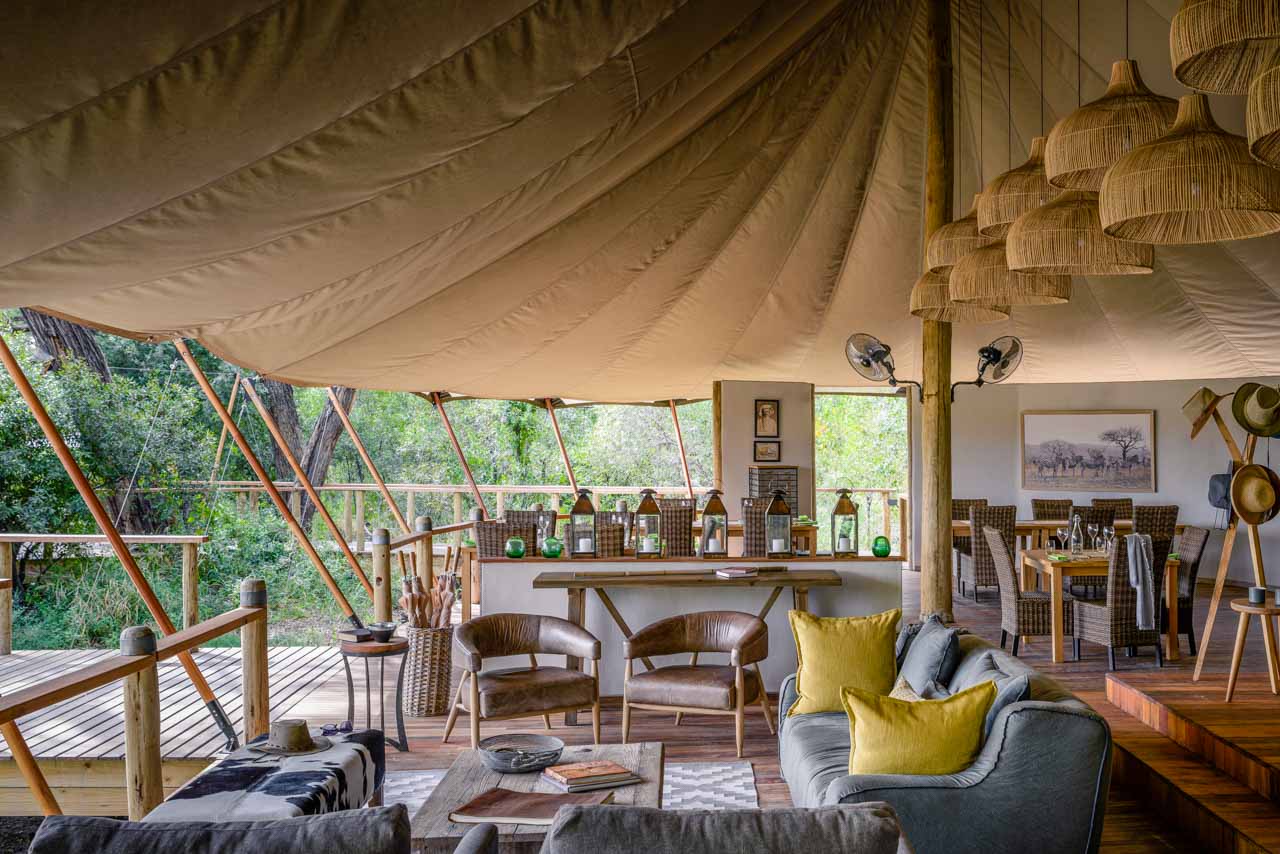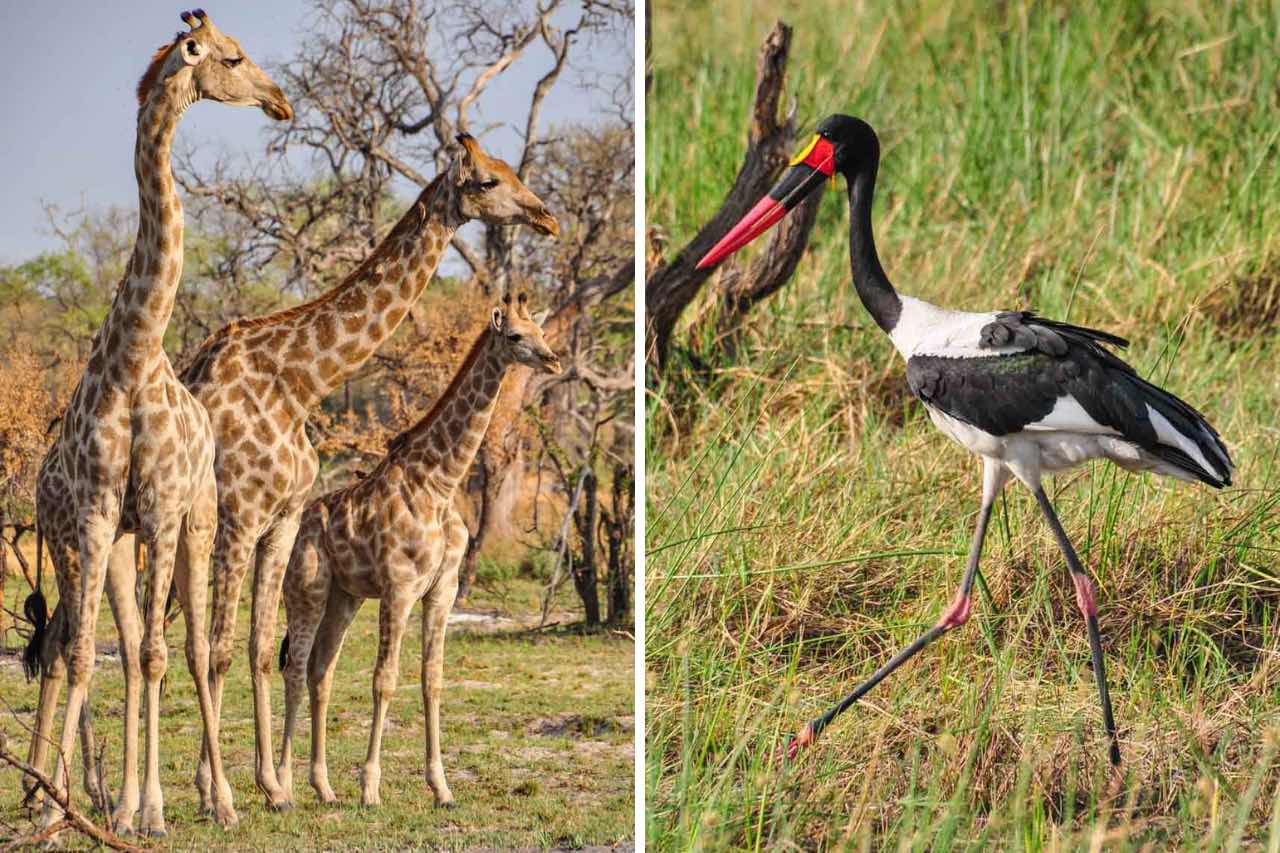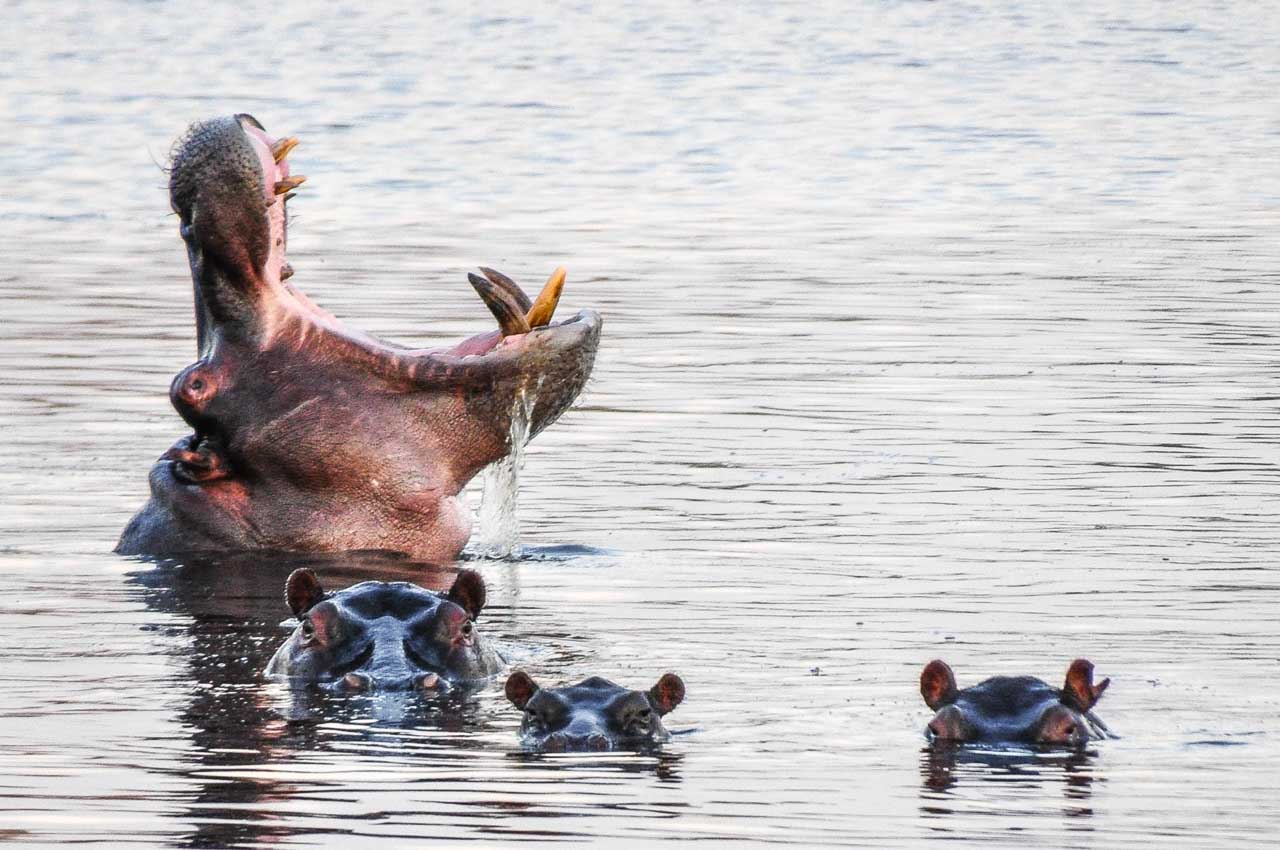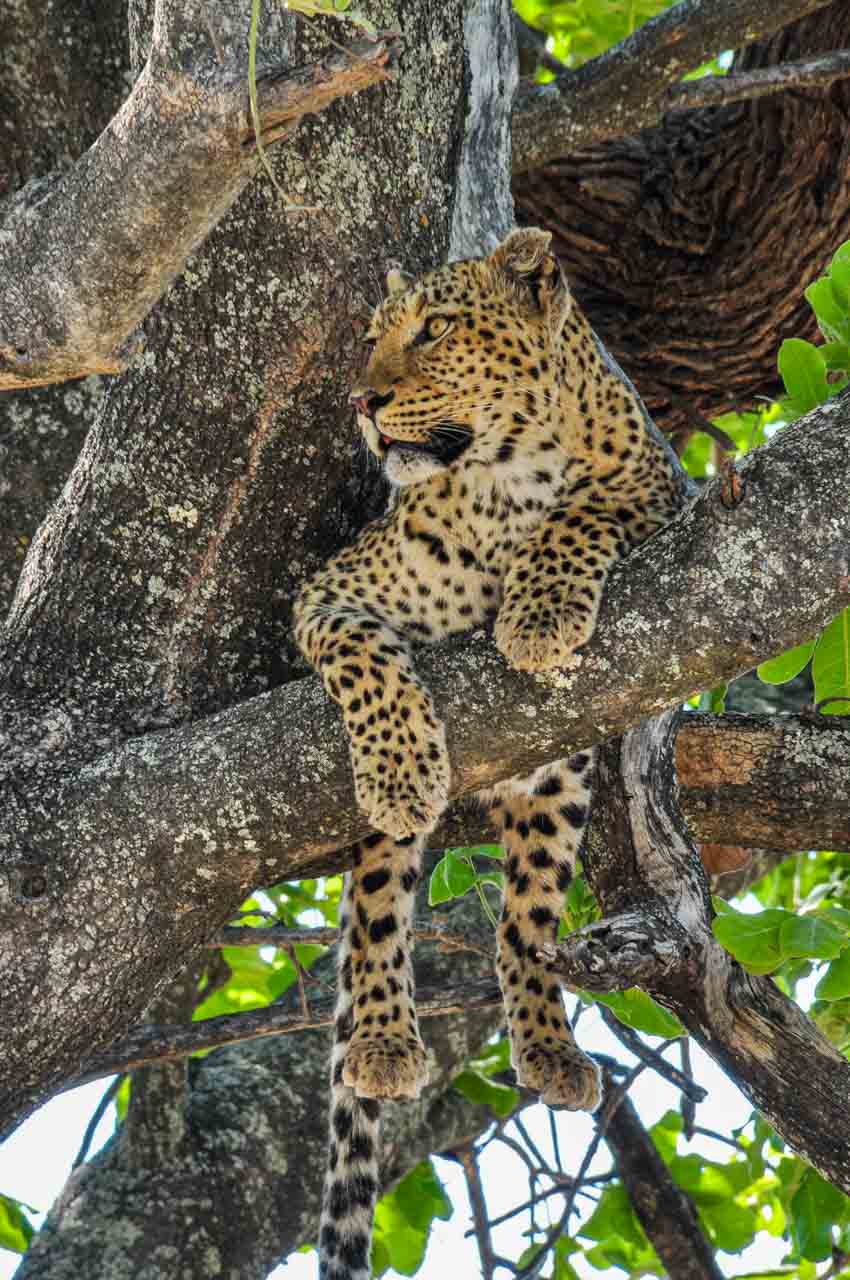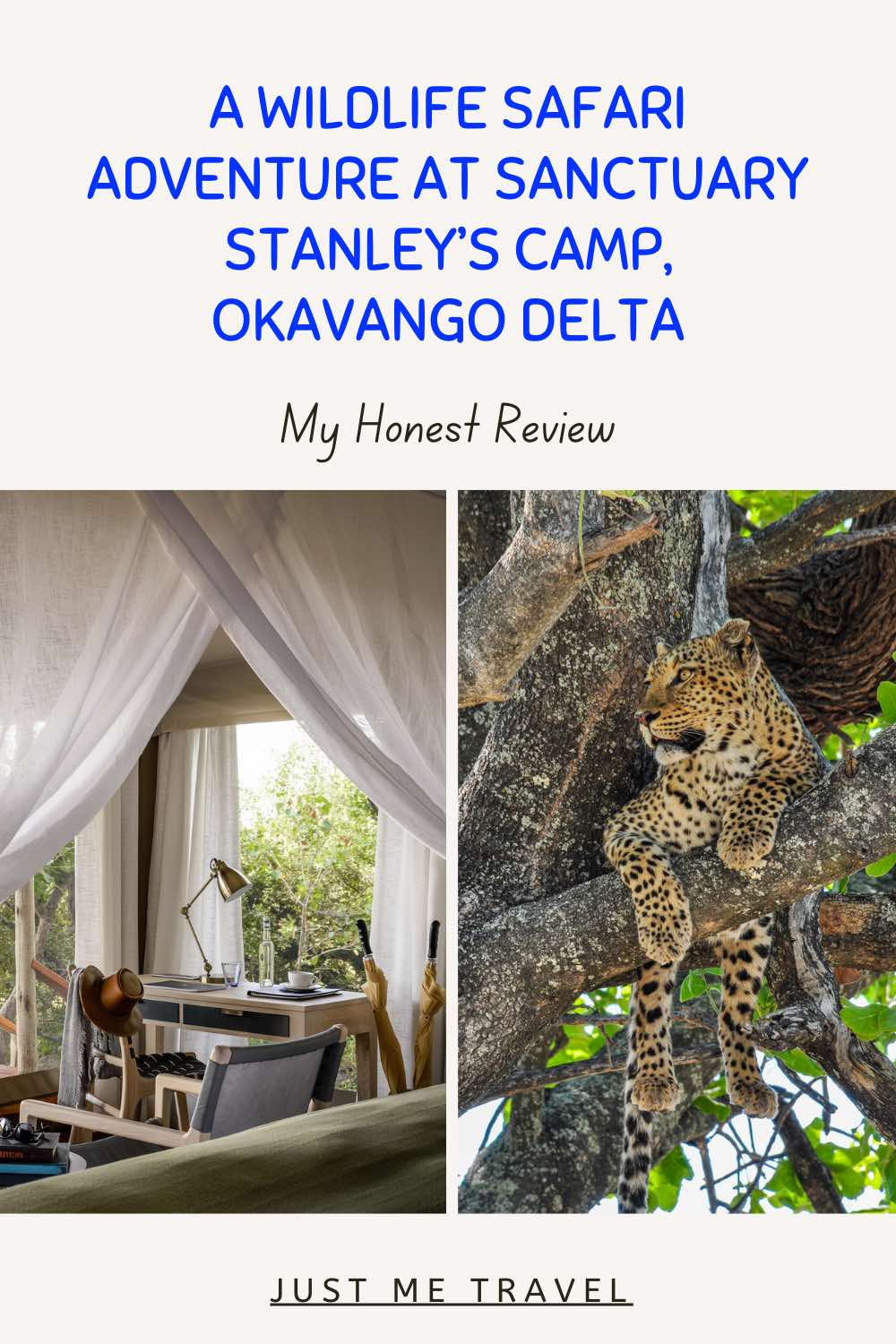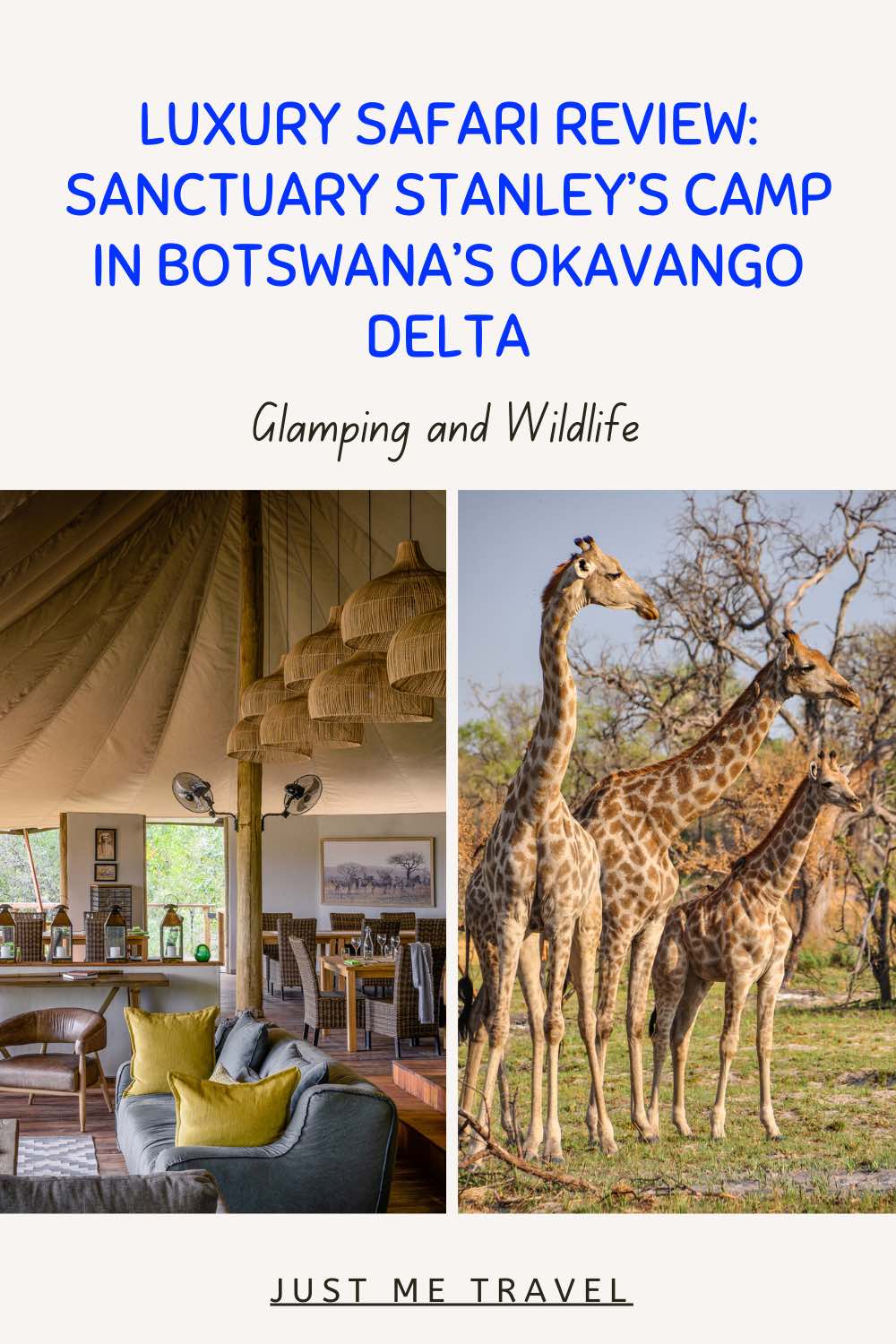Luxury Glamping Meets Unforgettable Wildlife Encounters in Botswana’s Okavango Delta: My Honest Sanctuary Stanley’s Camp Review. Nestled in the heart of Botswana’s Okavango Delta, Sanctuary Stanley’s Camp offers an…
Luxury Glamping Meets Unforgettable Wildlife Encounters in Botswana’s Okavango Delta: My Honest Sanctuary Stanley’s Camp Review.
Nestled in the heart of Botswana’s Okavango Delta, Sanctuary Stanley’s Camp offers an exceptional safari experience where luxury and nature blend seamlessly. Glamping takes on a new meaning at this exclusive camp with spacious, beautifully appointed tents that provide the perfect blend of comfort and adventure. My time here was filled with exhilarating wildlife encounters during unforgettable game drives, where elephants, leopards, lions, giraffes, and other animals roamed freely. What truly sets Stanley’s Camp apart, though, is the personalised hospitality that made me feel like part of the family, ensuring an unforgettable stay in the African wilderness.
Join me as I unveil the charming appeal of this wilderness sanctuary and relive moments of wonder, awe, and connection with nature.
Sanctuary Retreats owns and operates luxury safari lodges and camps in Kenya, Botswana, Tanzania, Uganda, Zambia, and Namibia. Sanctuary Stanley’s Camp, named after the explorer Henry Stanley, is one of two Sanctuary Retreats’ camps in Botswana’s Okavango Delta. It is in a large private concession on the southern tip of Chiefs Island and shares a border with the Moremi Game Reserve.
Stanley’s Camp is accessible by air. A flight from Maun takes about 15 minutes, and a flight from Kasane takes about 90 minutes. The camp itself is about a 20-minute drive from Sanctuary Stanley’s Camp’s private airstrip.
I flew to Maun in Botswana from Johannesburg in South Africa – a two-hour flight. For the first time in my extensive travels, check-in at Johannesburg Airport weighed my carry-on bag. Luckily, my two bags were under 20 kilograms when weighed together – the maximum limit for my light aircraft flights to and from Sanctuary Stanley’s Camp.
From Maun, I took a Mac Air flight to Stanley’s Camp. The plane was a six-seater – seven if you account for the pilot, and he probably should be included! The flight took ten minutes, and I had fantastic aerial views of the Okavango Delta.
Three of us got off the plane at Stanley’s Camp airstrip, which was simply hard, packed earth (like baked clay) but well maintained. At the airstrip, a Stanley’s Camp staff member met us in an open-sided 4X4 game drive vehicle. Before we could drive away, we had to wait for the plane to be airborne to ensure it took off okay.
About ten minutes from the airstrip, we stopped for a welcome ‘picnic’ in the bush, which included champagne, juice, soft drinks, and nibbles. I was grateful for the cold washer, and we were each given a water bottle with our name on it, which we were allowed to keep. These bush picnics would become a regular event over the next several days.
The advised 30-minute drive to the camp took 50 minutes, as we had to keep stopping to take photos of the elephants, giraffes, and wildebeest we encountered.
Arriving at the camp, the staff welcomed us with a song of greeting, a cold washer, and more drinks. In the meantime, the female staff (housekeeping) took our bags to our tents, carrying them on their heads. For my housekeeper, that was 12 kilos on her head! We had arrived at the camp in time for high tea (4.00 pm), which we had while checking in.
Check-in was more of a safety briefing:
- We can walk around the camp on our own during the day but never at night.
- Our guide must always escort us to and from our tent at night. Guests are allocated a group guide for the duration of their stay.
- We must never use the pool at night.
- Drink lots of water.
These safety precautions are necessary because wild animals – hyenas, monkeys, elephants, etc. – regularly enter the camp area.
After our safety briefing, a staff member showed me to my accommodation. The accommodation at Stanley’s Camp is glamping at its best. For those unfamiliar with the term ‘glamping’, it is a glamorous alternative to traditional camping. Stanley’s Camp has ten tents, all with views over the floodplains. ‘Tent’ does not adequately describe the accommodation. The tent is a luxurious, spacious room with a king-sized bed, an ensuite bathroom that doesn’t lack any facilities, and a large veranda with a daybed; it just has canvas for walls and roof. There’s no air conditioning, but the room has a ceiling fan and a standard misting fan, and the canvas walls roll up to allow the breeze to flow through.
My housekeeper pointed out the essential facilities in the room:
- Insect spray (called Doom – appropriate name!),
- personal mosquito spray (called Peaceful Sleep – I hope so!),
- torch,
- alarm horn (to scare intruding predators away),
- emergency radio (walkie-talkie – hope I don’t need that!), and
- WiFi is only available in our tents.
After settling into my tent, I met my guide for a mokoro safari through the waterways of the Okavango Delta. A mokoro is a traditional canoe that is propelled through the water by standing in the stern and pushing with a pole. While lazing in the mokoro was very relaxing, I was disappointed with this activity as I saw nothing but water lilies and reeds. I am not sure what I expected, but a few water buffalo or birds would have made the experience more interesting. I needed to remind myself that wildlife sightings are, to a great extent, unpredictable. However, on the drive to the mokoros, we came across a leopard sitting under a tree and spent some time taking photos before he left the shade of the tree, checking us out as he left the area.
After the mokoro safari, drinks and nibbles were served in the bush by Stanley’s Camp staff before returning to camp.
Back at camp, there were more drinks and the essential cold washer before being escorted to my tent to get ready for dinner.
Later that evening, my guide escorted me to the central tent for dinner. The food was excellent, as too was the coffee. During dinner, staff informed us that the plan for the following morning would be a wake-up call at 5.15 am, breakfast at 6.00 am, and leave for a game drive at 6.30 am. I questioned how staff managed a wake-up call given there was no phone in our tents – thinking the call might come via the emergency radio. One of the other guests informed me that a ‘wake-up call’ meant tea or coffee brought to your tent by staff. Now that’s civilised!
At dinner, I was given a handmade reed bracelet with my name woven into it. Such a nice gesture!
In addition to having all our meals in the central tent, it proved to be an idyllic place to socialise with the other camp guests.
I was sorely tested during my first night’s sleep, as I am sure I slept with every insect known to man. I sprayed myself in Peaceful Sleep and sprayed the bed in Doom, but it made no difference! And it was hot! I learned to encase my bed in the mosquito netting BEFORE leaving for the afternoon game drive.
On the morning of my first game drive, I was not only woken by my coffee wake-up call but also by several small monkeys making a racket in the trees outside my tent.
My Sanctuary Stanley’s Camp four-night package included accommodation, all meals, and game drives (morning and afternoon). I had come for the game drives, especially to see elephants and hippos, and I wasn’t disappointed. The excellent accommodation, delicious meals, and attentive staff hospitality were an added bonus – the icing on the cake!
On that first morning’s game drive, we saw so much wildlife. In the first hour, there were warthogs, buffalo, zebras, giraffes, impalas (easily distinguished from other antelope because of the black stripes on their rear end), and one lone bull elephant. There was no more wildlife for the next three-quarters of an hour, and I thought that was it. Then we came across a couple of saddle-billed storks, soon followed by a group of elephants. More wildlife quickly followed: different types of antelopes, four or five herds of elephants, a large flock of stocks fishing in a pool of water (different to those seen earlier), baboons, more warthogs, lots more buffalo, and cross it off my bucket list, a pod of hippos in a waterhole. The zebras had several foals in the herd, while the elephant herds had elephants of differing sizes (ages).
At 9.30 am, we stopped in a clearing in the bush for coffee/tea and muffins. There’s that picnic again! Always welcome after such an early breakfast.
Usually, a game drive lasts three hours, but this one lasted five hours as we had to take a couple of guests to the airstrip for their flight out of Stanley’s Camp. The plane had to abort its first attempt at landing because there were impalas on the airstrip. Once again, we waited for the plane to take off before continuing our game drive.
As I lay on my bed resting between lunch and high tea, I watched monkeys darting around outside my tent and heard antelope (at least I hoped it was antelope) munching on the grass on the other side of my canvas wall.
We spent most of the afternoon game drive looking for lions. Lion tracks could be seen, but there were no lions or any other wildlife, for that matter. However, after two hours of nothing, we came across impalas and giraffes, several warthogs (nature’s ugliest animal?), a lone wildebeest, kudus with their distinctive white stripes down their backs and pink colouring inside large ears, and a large herd of elephants (the largest I have seen so far).

Wildlife seen on our afternoon game drive – a baby elephant peeking out between two adult elephants, a warthog, an elephant up close, and a kudu.
As the sun lowered in the sky, a hippo suddenly emerged from the bushes and ran across in front of the vehicle. They can run very fast – no wonder hippos are Africa’s most dangerous animal, with the most human deaths attributed to them. When we rounded the corner of a clump of trees, there was a lagoon with many hippos in it. I was thrilled. Hippos and elephants were what I had come to Botswana for. We stopped by the lagoon for our game-drive coffee and snacks, which I barely had time to consume because I was taking so many photos of the hippos in the lagoon.
What I learned today:
- The darker the patches on a giraffe, the older the giraffe. The giraffes seen this afternoon were very old according to the colour of their patches.
- The patches on a giraffe are like human fingerprints – the patch patterns are unique to each giraffe, just like the stripes on zebras.
- Wildebeests are herd animals; seeing one by itself means it is old and has been kicked out by the herd.
Back at camp, I bought a beautifully carved wooden hippo at the camp’s shop to celebrate seeing hippos in the wild. The staff wrapped it tighter than a sausage, binding it in sticky tape to protect it from damage. Customs in Australia will have a hard time opening it to check the wood.
We had dinner tonight under the stars, around the campfire. The sky is unhindered at Stanley’s Camp, and the night sky is a mass of stars.
My second morning’s game drive started with a wake-up call at 5.15 am and leaving camp at 6.00 am before breakfast. The early start was because we were driving to Moremi Game Reserve for our game drive. Since we missed breakfast, the staff had packed extra food for our mid-game drive picnic. So, instead of morning tea, we had brunch.
The game drive through Moremi Game Reserve was uneventful. However, we did see a couple of honey badgers, which is rare.
This day, lunch was not back at camp but was set up in the veld by staff who had brought everything from the kitchen. It was a lovely setting, with zebras roaming in the distance, and a unique experience.
I spent the afternoon reading on my veranda’s daybed while watching two elephants getting closer and closer to my tent.
I must admit that after a couple of days of breakfasts, lunches, dinners, game drive picnics, and high teas, I started skipping meals. We were fed so often at Stanley’s Camp that I just wasn’t hungry by the evening meal.
On my final game drive, I saw elephants, kudus, and heaps of impalas. But the highlight was photographing a leopard chilling out in the branches of a tree.
Why I recommend Sanctuary Stanley’s Camp
- The accommodation at Stanley’s Camp is glamping at its best. The ‘rooms’ are comfortable and beautifully fitted out, and they are an ideal place to relax and wind down after a game drive when you want time to yourself.
- Stanley’s Camp feels intimate, with only ten tents (‘rooms’).
- Your tent is situated on the edge of a vast, open plain (veld), offering an uninhibited view of wildlife roaming across it.
- The attention provided by the staff was individual and personalised. Having the same guide throughout my stay ensured my needs were met, even when they didn’t have to be! When I opted to forego an afternoon game drive for a rest, my guide arranged for high tea to be brought to my tent. I believe he went above and beyond – meeting my wants rather than my needs. I could not fault the staff and management.
- The game drive vehicles at Stanley’s Camp were open-sided, making spotting wildlife much easier. As Sanctuary Stanley’s Camp is on a private concession, we could get up close to animals (always when safe to do so).
- Staff care about your welfare. When I got sunburnt (pack the sunscreen!), a staff member phoned its sister camp in the Okavango Delta for sunscreen for me. Unfortunately, there was none to be had! We were travelling on dirt roads on game drives and could be tossed about in the vehicle. When going over particularly rough sections, our guide would turn around and ask if we were all still in the vehicle.
- Wherever I travel, I will always seek out high tea venues. When I booked Sanctuary Stanley’s Camp, I was unaware that high tea was included. That it was served every afternoon was a delightful bonus.
Ask yourself, why would you not stay at Sanctuary Stanley’s Camp? From a seasoned traveller and someone who lived in Namibia for several years, I highly recommend a wildlife safari holiday at Stanley’s Camp.
A note on when to go
I travelled to the Okavango Delta in early November. In hindsight, it was not the ideal time to go, as it was very hot and humid due to the late start of the wet season. There was no escaping the heat, something I usually thrive on. My guide told me the temperature over the three full days of my stay had been 38, 41, and 43 degrees Celsius, respectively, with the humidity at 88%. What rain I did see (on my final evening) lasted five minutes and didn’t even wet the ground.
While the timing of seasons can be unpredictable, perhaps it is best to take your African safari in Botswana at the beginning of the wet season rather than at the end!
See here for the best time to visit the Okavango Delta. My trip to Botswana had been a last-minute decision due to an unforeseen need to change travel plans, and I did not consider the weather!
My stay at Sanctuary Stanley’s Camp in Botswana’s Okavango Delta was nothing short of extraordinary. From the luxurious comfort of glamping under the African sky to the thrill of witnessing wildlife in its natural habitat, every moment felt magical. The attentive and warm hospitality from the staff only enhanced my experience, making it feel both intimate and unforgettable. Whether you’re a seasoned safari-goer or a first-timer, Stanley’s Camp offers a perfect blend of adventure and relaxation. It’s a place where nature and luxury harmonise, leaving you with memories that will last a lifetime.
I highly recommend Sanctuary Stanley’s Camp as your destination of choice.
Disclaimer: This post contains no affiliate links. All views and opinions are my own and non-sponsored. Unless specifically stated, all photos are my own and remain the copyright of Joanna Rath/Just Me Travel.
© Just Me Travel 2018-2024.
Where was your favourite African safari?
I love hearing from you and look forward to reading and responding to your comments. Please join the conversation by leaving a comment below.
Like this post? Save it for Later!
Author’s Note: Please check the latest travel restrictions before planning any trip and follow government advice.
You might also like
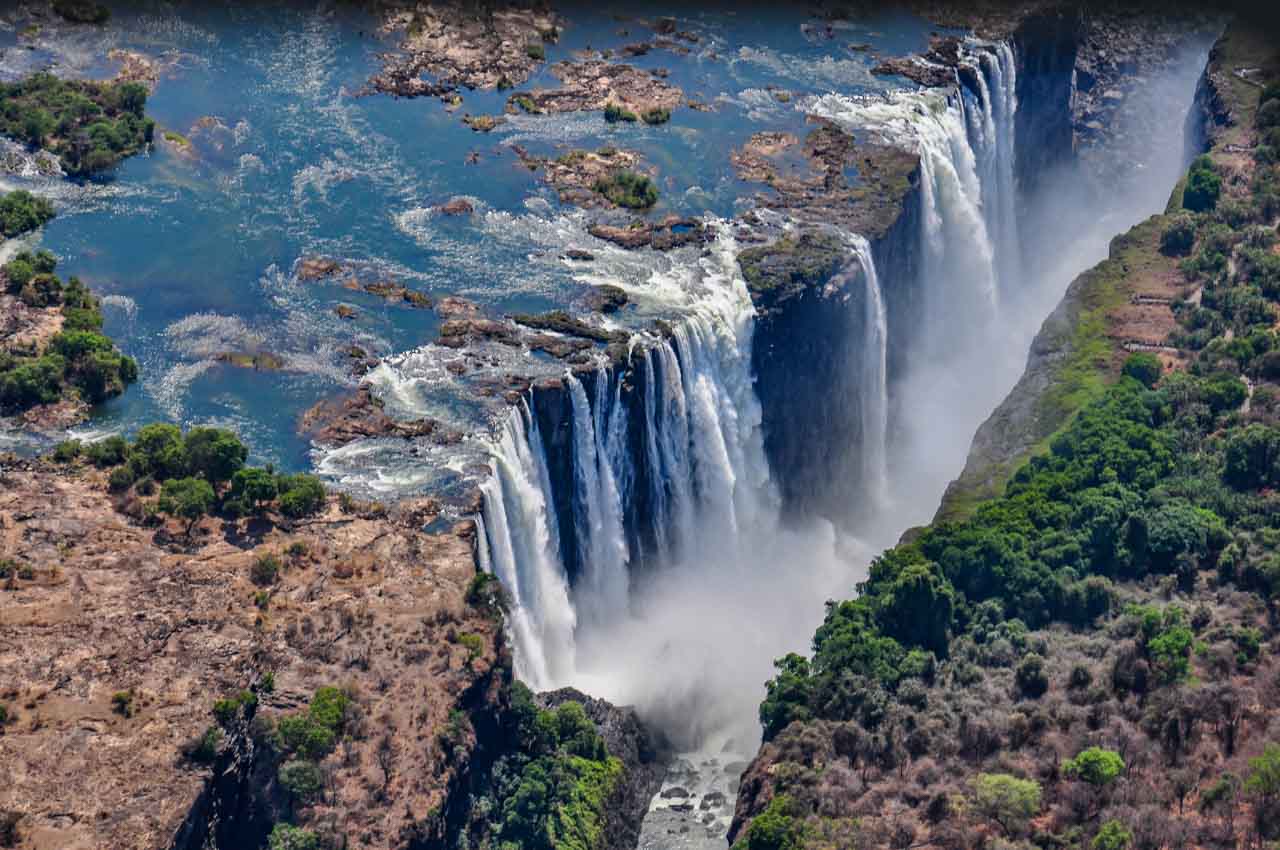 SEE THE POWERFUL VICTORIA FALLS BY LAND AND AIR – My Photo Guide (2024 Updated). See my landscape and aerial photos to inspire you to visit Victoria Falls on the border of Zimbabwe and Zambia. A bucket-list destination!
SEE THE POWERFUL VICTORIA FALLS BY LAND AND AIR – My Photo Guide (2024 Updated). See my landscape and aerial photos to inspire you to visit Victoria Falls on the border of Zimbabwe and Zambia. A bucket-list destination!

